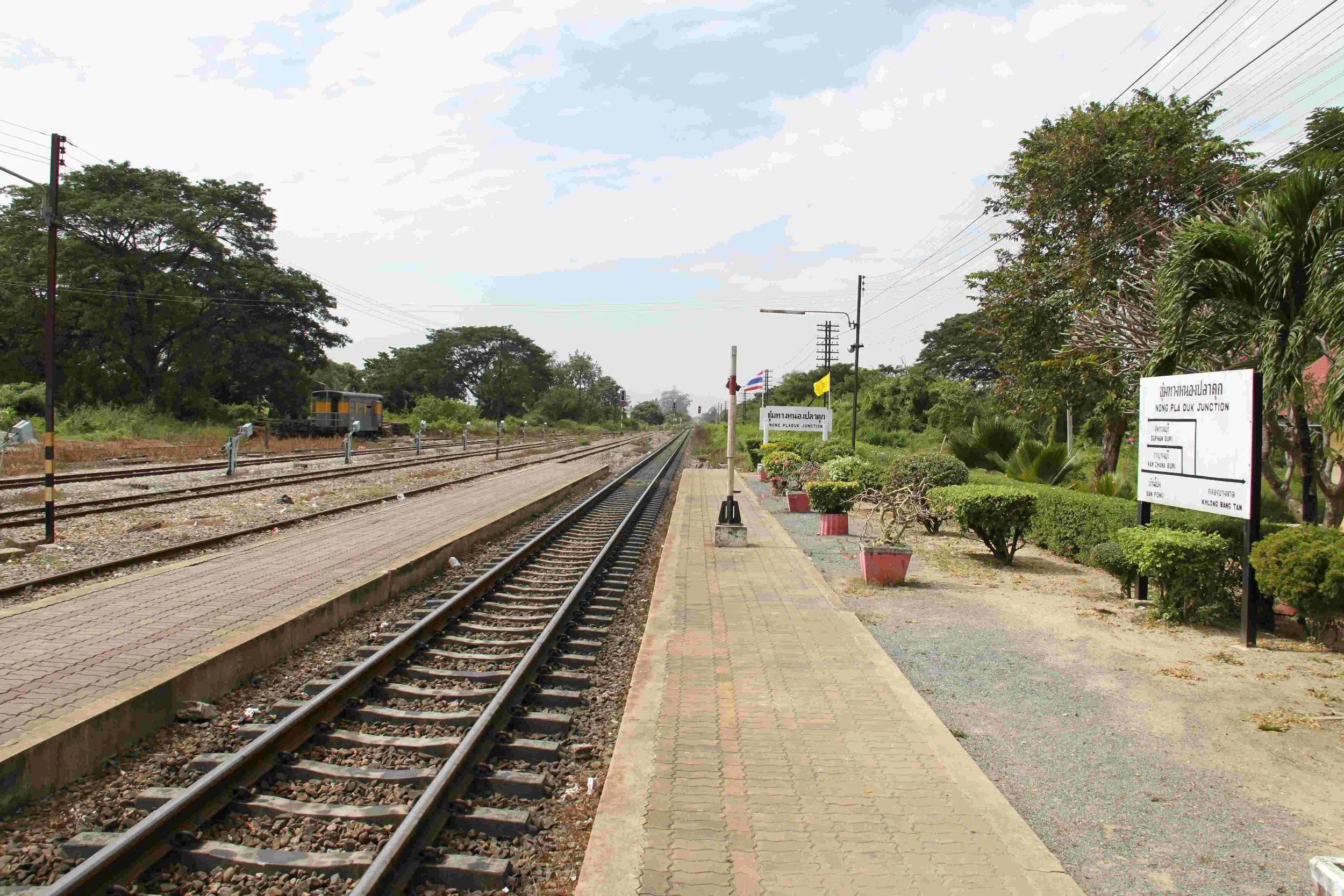Nong Pladuc POW Camp
Current day railway junction at Nong Pladuc
In the construction of the Burma-Thailand Railway during World War 2, allied POW camps made of thatched huts and usually with dirt floors, were built at regular intervals along the railway. In most cases, as each section of the railway was finished, the camp was vacated and was either dismantled by locals or allowed to be consumed by the jungle.
Nong Pladuc POW Camp
Some camps remained and were used by the POWs who were kept on as maintenance crews particularly when the railway became the subject of allied bombing. Camps were also kept as hospitals to treat the sick POWs returning from along the railway.
On the very southern end where the Burma-Thailand Railway joined the main line from Singapore to Bangkok, is a small place called Nong Pladuc. During the war, it was a major railway junction which included marshalling yards and railway engineering and maintenance workshops. A little over kilometre away, was the POW camp which primarily provided labour to the workshops.
As construction of the railway came to an end, many POWs were brought to Nong Pladuc to await their return to Singapore. Originally expected to house up to two thousand POWs, the Nong Pladuc POW Camp finally had over eight thousand men in two camps and included a substantial hospital and cookhouse.
The life of the POW in the camp was a little easier than during the railway construction particularly during the “speedo” period when they were required to work long hours to meet the tightening deadlines imposed by the Japanese to complete the railway. Morale was kept as high as possible with a concert party being formed to keep the POWs entertained. This proved to be very popular amongst the POWs with concerts being held several times a month and even to the extent that a theatre was built especially for the concerts. Sometimes, the Japanese Camp Commander was a special guest.
Inside a typical POW hut on the railway
In the later months of 1944, the railway workshops became the target of allied bombing. Unfortunately, with its close proximity to the workshops, the camp became the subject of ‘friendly fire’. The first raid on the 5th September was the most devastating with 90 POWs being killed and over 400 injured. The fourth and last raid on the 31st December resulted in several men being killed, the hospital burnt down, the cookhouse destroyed and several other buildings severely damaged.
Into 1945, life became a little harder for the POWs. They rebuilt the hospital and cookhouse but there was always the constant threat of another air raid. With the war going badly for the Japanese, the Japanese Camp Commander became paranoid that with so many POWs, they would breakout and join the local Thai resistance. Strict rules were enforced, officers were separated from their men and liberties restricted along with the concerts. Later in 1945, the Japanese would surrender and the POWs would be freed to begin their long journey back to their homes.
Camp Layout




